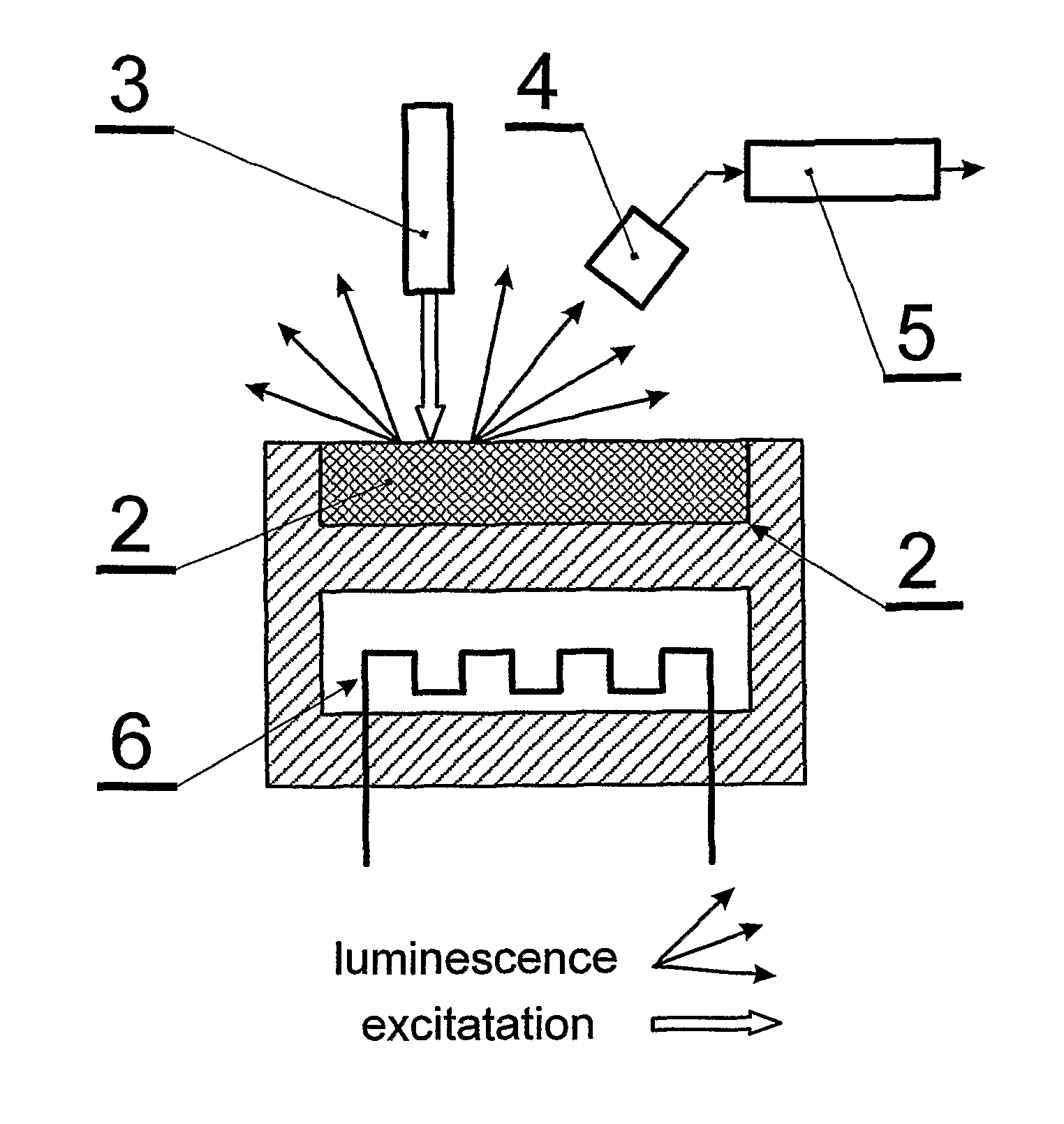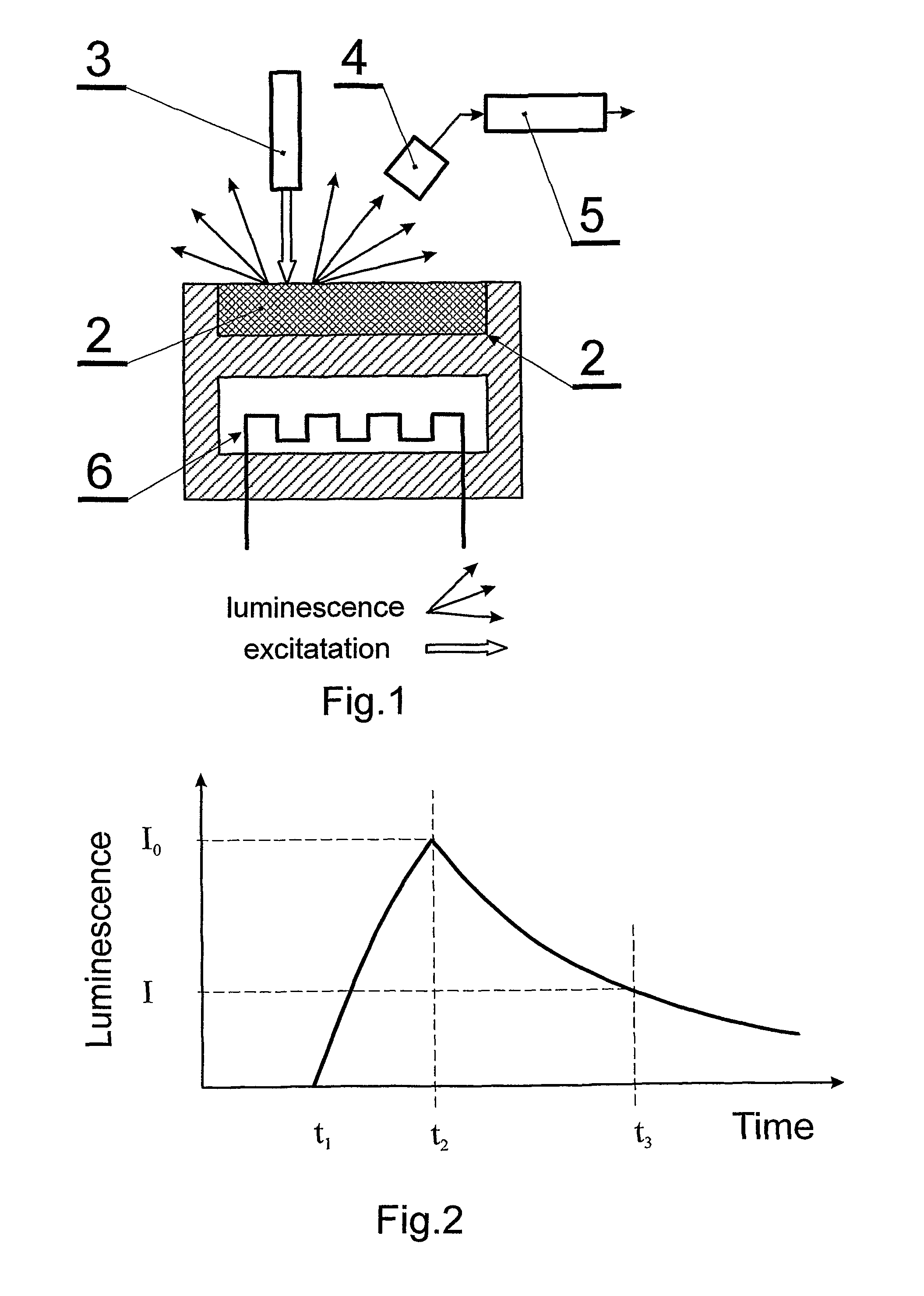Zirconium dioxide luminescence oxygen sensor
a luminescence oxygen and sensor technology, applied in the field of zirconium dioxide luminescence oxygen sensor, can solve problems such as complex structure, and achieve the effects of simple measurement data handling, clear algorithm, and elimination of the need to stabilize temperatur
- Summary
- Abstract
- Description
- Claims
- Application Information
AI Technical Summary
Benefits of technology
Problems solved by technology
Method used
Image
Examples
example 1
[0061]A measuring sensor 2 containing nanocrystalline zirconium dioxide, consisting of a stabilized tetragonal phase with an average size of crystallines 80 nm has been prepared, its calibration has been conducted, during which one has determined the thermal energy activation of the luminescence decay (Ea), parameter τ0, range of its work temperature, dependence of the luminescence intensity in the function of the oxygen pressure in this temperature range as well as the time of the luminescence decay in the temperature function, and then it has been placed in the sensor element containing metal chamber 1 and heated up to the temperature of 450° C. and the car exhaust fumes have been let in. Next, in time t0, the surface of the sensor contacting the measured gas has been illuminated by the inducing UV light pulse with LED 3 (280 nm), which excited the own luminescence in ZrO2 in the band 2.7 eV, which then was detected by the photodiode 4 (FDS 100) having signal rise—time 10 ns. The ...
example 2
[0062]A measuring sensor 2 containing nanocrystalline zirconium dioxide, consisting of a stabilized tetragonal phase with an average size of crystallines 15 nm has been prepared, its calibration has been conducted, during which one has determined the thermal energy activation of the luminescence decay (Ea), parameter τ0 range of its work temperature, dependence of the luminescence intensity in the function of the oxygen pressure in this temperature range as well as the time of the luminescence decay in the temperature function, and then it has been placed in the sensor element containing metal chamber 1 and heated up to the temperature of 200° C. and the analysed gas (mixture of nitrogen and oxygen) has been let in. Next in time t0, the surface of the sensor contacting the measured gas has been illuminated by the inducing UV light pulse with LED 3 (280 nm), which excited the own luminescence in ZrO2 in the band 2.7 eV, which then was detected by the photodiode 4 (FDS 100) of the gro...
PUM
 Login to View More
Login to View More Abstract
Description
Claims
Application Information
 Login to View More
Login to View More - R&D
- Intellectual Property
- Life Sciences
- Materials
- Tech Scout
- Unparalleled Data Quality
- Higher Quality Content
- 60% Fewer Hallucinations
Browse by: Latest US Patents, China's latest patents, Technical Efficacy Thesaurus, Application Domain, Technology Topic, Popular Technical Reports.
© 2025 PatSnap. All rights reserved.Legal|Privacy policy|Modern Slavery Act Transparency Statement|Sitemap|About US| Contact US: help@patsnap.com



